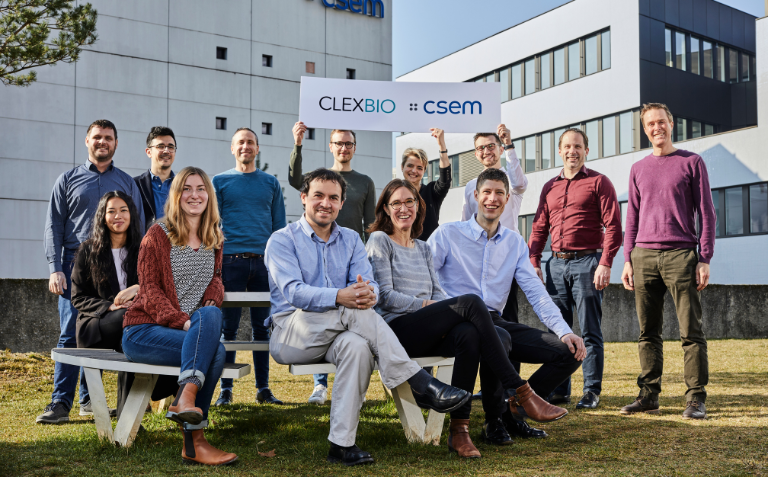
Supervene: growing humain vein tissues
Share this article
ClexBio, a Norway-based startup, is teaming up with CSEM to develop the world’s first machine to grow tissue-engineered human veins in the lab. The joint project has received CHF 2 million in funding from the Research Council of Norway.
Severe chronic venous insufficiency (CVI) is a debilitating disease afflicting millions of people around the world. It causes a variety of symptoms including swollen, painful legs, edema, cramps, varicose veins, and ulcers. These symptoms are caused by poor circulation, which results in blood accumulating in the legs and impairs patients’ ability to walk – seriously impacting the quality of life and imposing considerable costs on healthcare systems for wound care.
There is currently, no efficient solution. “Compression stockings remain the standard form of treatment for chronic venous insufficiency patients but the effect on ulcer recurrence and symptom relief is quite insignificant”, explains Dr. Antonio Rosales, head of the National Unit For Reconstructive Deep Venous Surgery at the Oslo University hospital (NOVI/OUS) and leading clinical collaborator of ClexBio. “An engineered vein graft would be an absolute game-changer for millions of CVI patients”, he adds.
ClexBio intends to draw on its expertise in regenerative medicine to tackle the root cause of CVI. The company has teamed up with the specialists in automation from CSEM to develop an automated process for engineering functional vein grafts comprised of pure human tissue material that integrates into the patient’s body and turns into real, living tissue. ClexBio has received 20 million Norwegian kroner (around 2,010,000 Swiss francs) in funding for this research from the government of Norway.
Producing these revolutionary implants requires a closed, high-tech bio-manufacturing system that can operate automatically. This system will be designed by CSEM’s engineers, based on their extensive experience with hydrogels, automation, and physiological microsystems.
“Using a closed system to engineer the vein grafts helps reduce the risk of contamination, ensure product quality and safety and facilitate regulatory compliance,” says Gilles Weder, the Group Leader in Cell Microtechnologies at CSEM. His colleague Vincent Revol, the head of R&BD in Life Science Technologies at CSEM, adds: “In the field of regenerative medicine, one of the biggest challenges is progressing from the lab bench to a clinical application, since that requires standardized, automated fabrication processes. New technology like this will be key to unlocking the incredible potential of novel cell and gene therapies.”
If this R&D project is successful, it could lead to the world’s first permanent treatment for millions of suffering CVI patients globally.